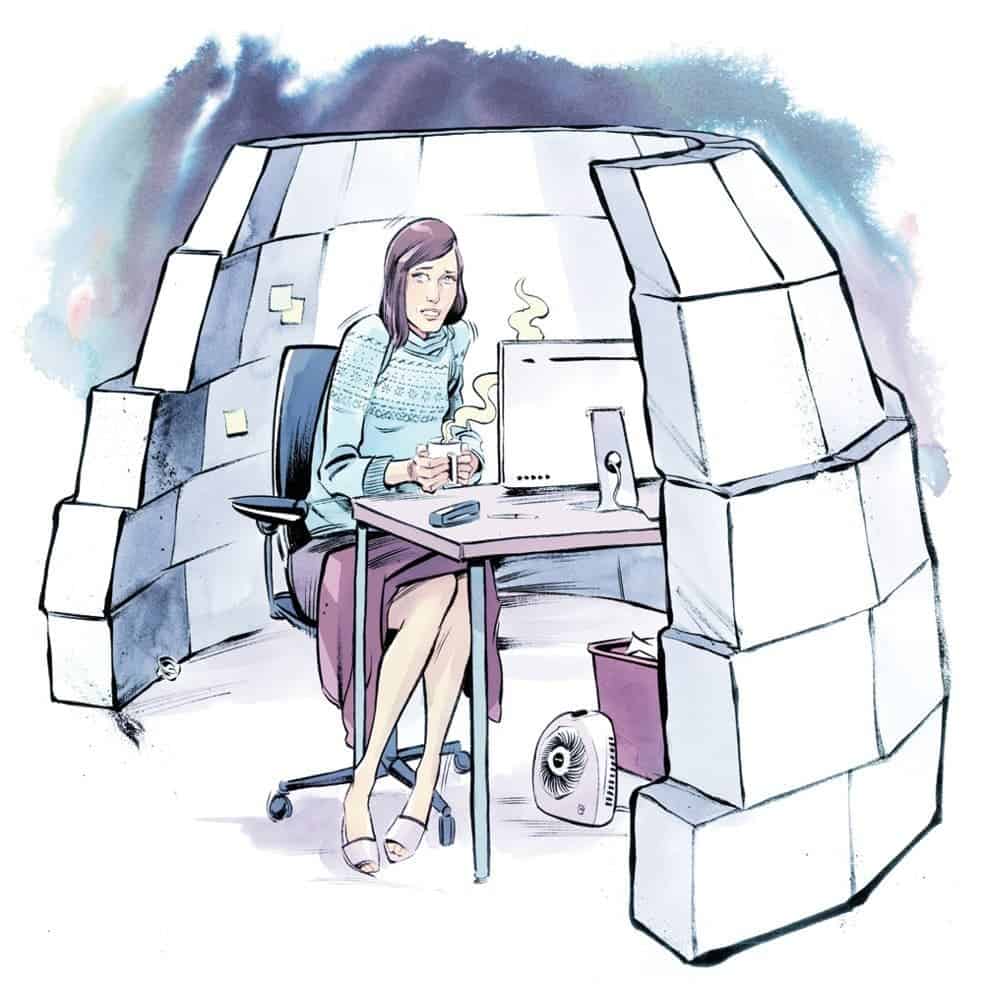Women often complain the AC is turned way too high at work. Many are forced by necessity to come to work on a hot summer day with a spare sweater or a freaking Snuggie, while men coworkers seem to be all fine, comfortable wearing only shorts and a T-shirt. Clearly, some people feel colder or hotter than others when exposed to the same temperature. However, I think nowadays it’s no secret that most women get terribly uncomfortable in the conditions set by most thermostats at work. Now, a new study suggests that the way climate control in office buildings has been designed in the past couple of decades is discriminatory and doesn’t reflect reality. That’s because although in most workplaces today you’ll find men and women in equal proportion, the AC is geared to provide the optimal comfort conditions for a 154 pounds, 40 year-old man. This profile may have been representative 50 years ago, but today it’s outdated. It’s time to align thermostats with today’s needs.
“In a lot of buildings, you see energy consumption is a lot higher because the standard is calibrated for men’s body heat production,” said Boris Kingma, a co-author of the study and a biophysicist at Maastricht University Medical Center in the Netherlands. “If you have a more accurate view of the thermal demand of the people inside, then you can design the building so that you are wasting a lot less energy, and that means the carbon dioxide emission is less.”
The authors note that most buildings today are geared towards men’s metabolic rate to provide thermal comfort. This is based on four external factors (air temperature, radiant temperature, air velocity and humidity) and two personal factors (metabolic rate and clothing). It’s no secret that metabolic rates vary widely across individuals, which means some will feel more comfortable than others. You can never make everyone happy, but it’s pretty clear that women, which have more body fat and weigh less than men, are particularly discriminated.
The new study gauges just how uncomfortable office thermostats are. The Dutch researchers ran tests on 16 women in their twenties as they performed typical office duties (write an e-mail, read a book) in a respiration room – a specially designed room that constantly measures how much oxygen a person inhales and carbon dioxide exhales. Sensors strapped to the body measured perspiration, humidity, heart rate and of course temperature, both on the body’s surface and on the inside (a special electronic pill was swallowed).
The current standard for thermal comfort, based on Fanger’s thermal comfort equation, assumes an average metabolic rate that produces a resting heat of 60 to 70 watts per square meter. But the Dutch researchers found women produce 35 percent less heat, and consequently what’s just right for a male could be chilly to freezing for a woman.
Unfortunately, it’s not enough for companies to turn down the air conditioning to make a balance. Most buildings – vents, walls, insulation etc – are designed with this particular thermal comfort level in mind. But developers might want to keep this in mind for future projects. Ultimately, this could translate in energy savings and a more reasonable ambient comfort level for both sexes.




